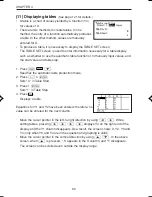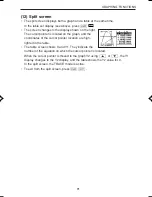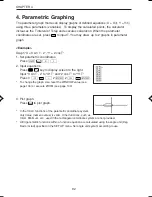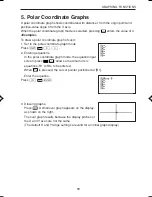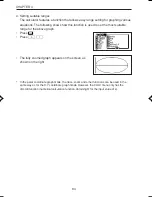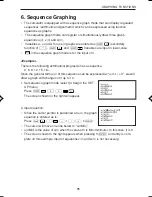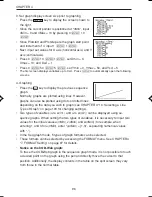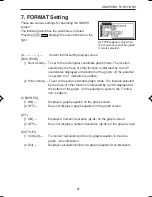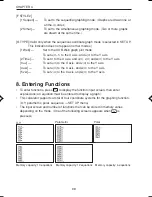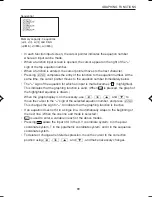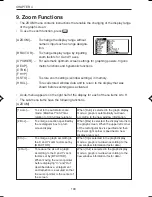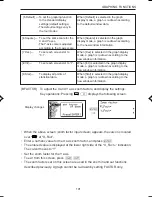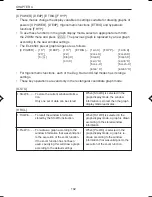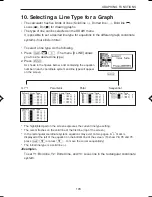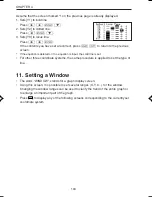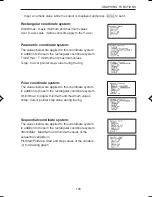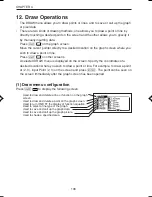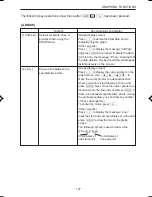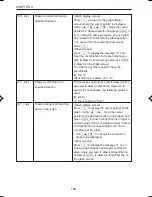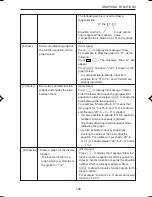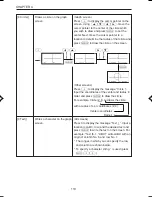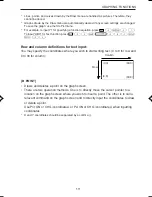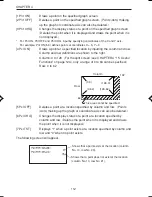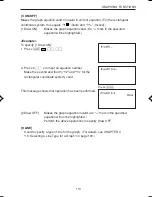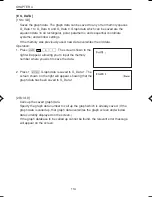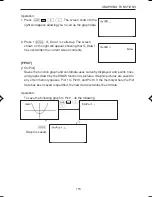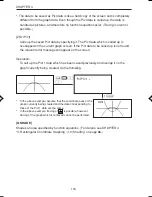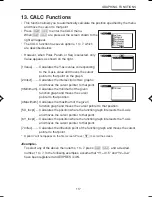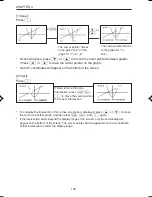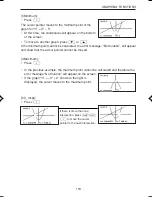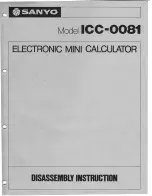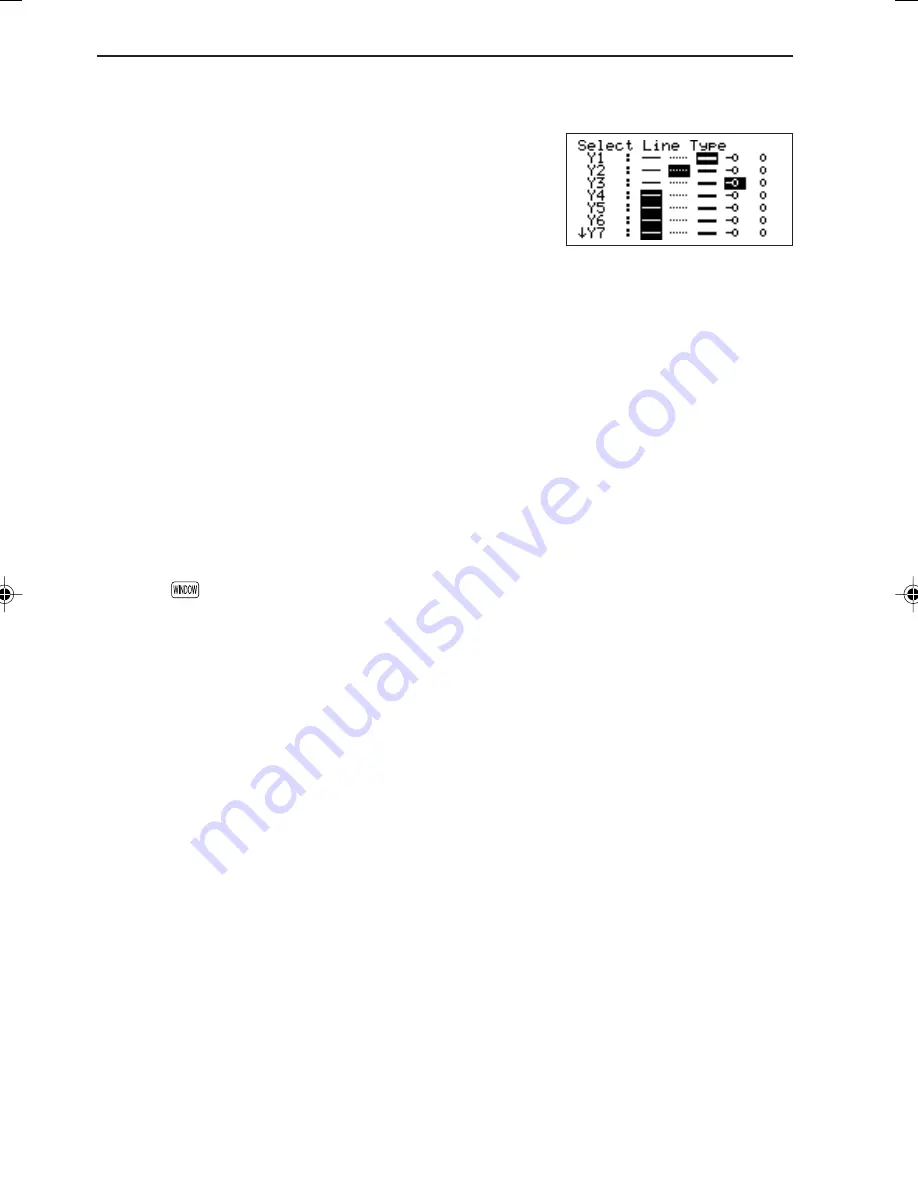
104
CHAPTER 4
Assume that the screen marked *1 on the previous page is already displayed.
1. Sets [Y1] to bold line.
Press
>
>
®
≥
.
2. Sets [Y2] to dotted line.
Press
<
®
≥
.
3. Sets [Y3] to locus line.
Press
>
>
®
.
If the contents you have set are correct, press
Ï
œ
to return to the previous
screen.
*
If the equation is deleted or if no equation is input, the solid line is set.
• For other three coordinate systems, the same procedure is applied to set the type of
line.
11. Setting a Window
• The word, “WINDOW”, stands for a graph display screen.
• Using this screen, it is possible to set several ranges (X, Y,
θ
...) for the window.
Changing the window ranges can be used to clarify the trend of the entire graph or
to enlarge an important part of the graph.
• Press
to display any of the following screens corresponding to the currently set
coordinate system.
EL-9650-(04)En (079-134)
8/7/00, 9:08 PM
104
Summary of Contents for EL-9650
Page 10: ...viii ...
Page 46: ...36 CHAPTER 1 ...
Page 230: ...220 CHAPTER 9 ...
Page 268: ...258 CHAPTER 12 ...
Page 349: ...339 APPENDIX When coordinate system is Rect param or polar ...
Page 350: ...340 APPENDIX When coordinate system is Seq F STYLE2 E STYLE1 ...
Page 352: ...342 APPENDIX ...
Page 353: ...343 APPENDIX on Program screen ...
Page 354: ...344 APPENDIX ...
Page 355: ...345 APPENDIX ...
Page 356: ...346 APPENDIX ...
Page 357: ...347 APPENDIX ...
Page 358: ...348 APPENDIX ...

